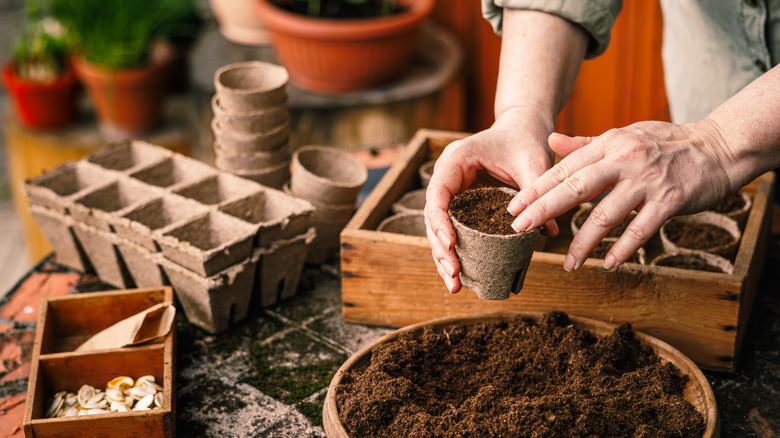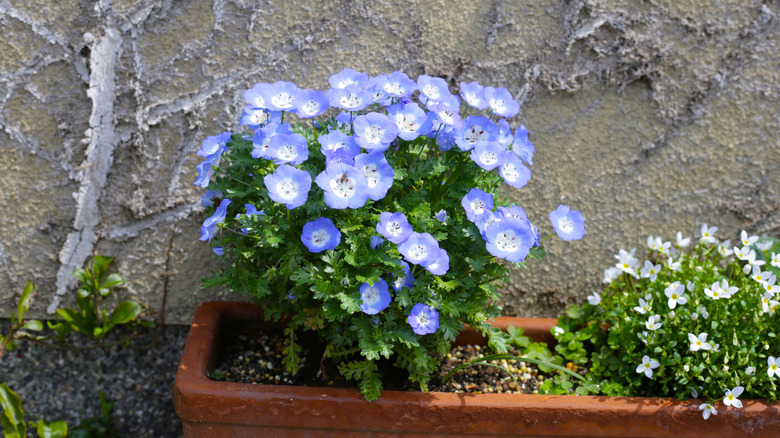The Blue Flowering Plant You Can Easily Grow From Seed In Cooler Spring Weather
If you live in a region that experiences cooler spring weather, no doubt, you're looking for a few extra plants you can add to your flower garden, enhance your borders, or add some exceptional color to your containers. What about a pretty little blue bloomer that has the most enchanting flowers and prefers the cooler weather in spring? Better yet, this blue flowering plant can be easily grown from seed and has the delightful name of baby blue eyes (Nemophila menziesii). If you've not explored adding new colors to your yard, you'll find that blue is a beautiful color to have in the garden if you know how to do it right.
Baby blue eyes is a charming annual that's native to Mexico but is a popular species in California, Arkansas, Nevada, and Oregon. It does prefer those regions that have cooler summer temperatures but will tolerate the hotter climates in USDA hardiness zones 8 through 10 during spring and very early summer. What's so outstanding about this wildflower is that it has the prettiest sky blue five-petaled flowers with a white center. This makes it ideal for adding some distinct color to your flower beds or to brighten up your container garden with that lovely pop of blue. You'll also find that this is one of those lovely trailing flowers perfect for hanging baskets.
How to grow baby blue eyes from seed
You can either start your seeds indoors or sow them straight in the garden in early spring. Don't worry if there's still a slight danger of frost, because the seeds do need cold stratification. If purchasing seeds, it's likely these have already been pretreated. But, if you've collected seeds from the previous season, it's a good idea to wrap them in a piece of paper towel and put them in the refrigerator in a plastic bag for a few weeks over winter. If starting them indoors, either use peat pots or fill a seedling tray with some quality seed-raising mix. Spread your seeds finely over the mix and only cover very lightly. The seeds should start to germinate when temperatures are between 59 and 70 degrees Fahrenheit. This can take anywhere from seven to 21 days.
When the seedlings have their first true leaves, you can either pot them into small individual pots if you've germinated them in trays, or let them get a little larger if you've used peat pots. The plants are normally ready for transplanting to the garden into moist, well-drained soil after around six to eight weeks from seeding. In cooler regions, these flowers do well in full sun, but if you're in a warmer zone, planting them in part shade is recommended. For a mass display, space your plants around 4 inches apart as they will spread a little to form a clump. As a bonus, you'll find that the sky blue of these blooms is a color spiders despise.

